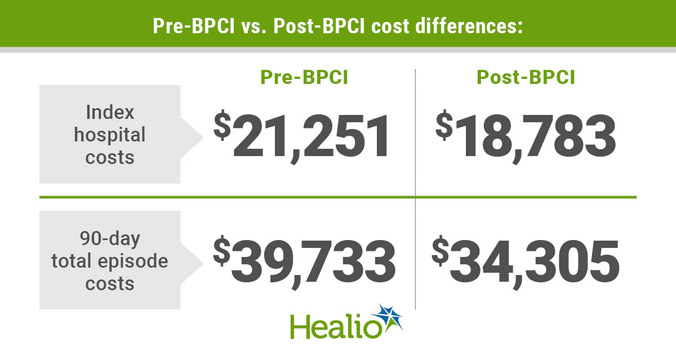A bundled payment program may reduce costs for bilateral TJA

Results showed 90-day episode-of-care costs may be reduced without a higher risk for readmission with the use of a bundled payment program for bilateral total hip and total knee arthroplasty.
“Efforts to provide high-quality, low-cost care for arthroplasty has led to increased adoption of alternative payment models,” Alexander J. Rondon, MD, MBA, co-author of the study, told Healio.com/Orthopedics. “These models have already proven effective with primary unilateral total joint arthroplasty (TJA); however, the primary focus of our study was to examine their efficacy in bilateral TJAs.”
Rondon and colleagues recorded demographic variables, comorbidities, readmissions and calculated 90-day episode-of-care costs based on CMS claims data among 319 patients who underwent either bilateral THA (n = 38) or TKA (n = 287) between 2015 and 2016. To identify independent risk factors for increased costs, researchers performed multivariate analysis. They compared patient data before and after the implementation of the Bundled Payments for Care Improvement (BPCI) program.

The bundled payment group comprised 74% of the total patient cohort. Results showed reduced hospital costs, post-acute care costs and overall 90-day episode-of-care costs among patients in the post-BPCI group, but no change in readmission rate between the pre- and post-BPCI groups.
“At our institution, we found the adoption of alternative payment models resulted in significant cost savings for bilateral procedures — $5,811 per procedure,” Rondon said. “Additionally, our study demonstrated increased costs for older individuals and those with cardiac history. These patients should likely not undergo a simultaneous bilateral procedure due to concerns about increased costs.” – by Casey Tingle
Disclosures: Rondon reports no relevant financial disclosures. Please see the full study for a list of all other authors’ relevant financial disclosures.
